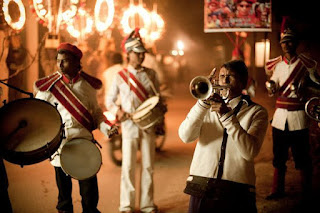 |
| Mana village, Uttaranchal, on the India and Tibet border |
 |
| On the fourth day of Shukla Paksha of Kartik, lakhs of devotees along the Indo-Gangetic plains, chiefly Bihar and eastern Uttar Pradesh, begin the four-day Chhath festival, in continuance of a tradition that goes back to posterity, carrying forward India's living tradition of worshipping the divine creator and nourisher of the Sun God. Photo courtesy: Mukesh Srivastava |
 |
| A wedding procession in Varanasi, India. The band and the lights are part of the groom's procession, which walks its way towards the bride's house. |
 |
| Kusti is a form of traditional Indian wrestling. |
 |
| In a remote village in the Sunderbans delta in West Bengal, India, fresh water is much scarcer during the summertime. Women have to go a half kilometer away to fetch drinking water from a tube well. |
 |
| Snake charmer with the Amber Fort as a backdrop, Jaipur, India |
 |
| The view in Kerala, Tamil Nadu, border in South India. |
 |
| The long walk up this road in Jaipur was definitely worth it for the view. |
 |
| So many billboards in one location. This photo was taken in Ameerpet,Hyderabad, India. |
 |
| Shot in the morning after rains flooded the Aghanashini River (Kumta, India). The laterite soil added the color red to the river. |
 |
| Babas want to get closer to God, so each day at the hottest hour of the day, noontime, they sit around flames of dung and smoke to torture their bodies in sacrifice. Haridwar, India. |
 |
| Girl walking on a rope during the annual desert festival at Jaisalmer, India |
 |
| Washerwoman along the ghats in Varanasi (also known as Benaras) in the state of Uttar Pradesh, India. They wash the clothes in the Ganges and let them dry in the adjoining ghats. |
 |
| Sparrow on buffalo's head |
 |
| Along the Ganges, a candle flower ceremony for luck |
 |
| The ceremony occurs daily at dusk at many revered sites such as Haridwar, Varanasi, Vrindavan, etc. |
 |
| These two boys are dressed like the Hindu gods Ram and Sita to play a spiritual drama from the epic of Ramayana. |









No comments:
Post a Comment